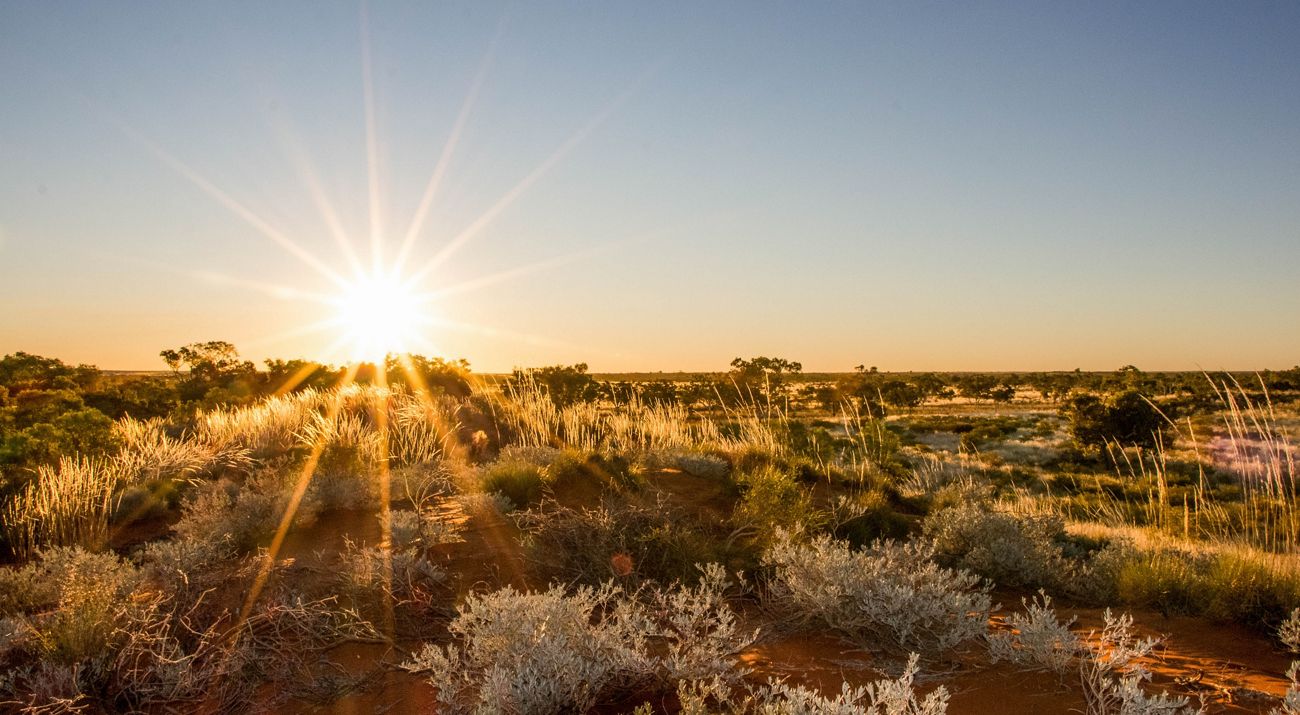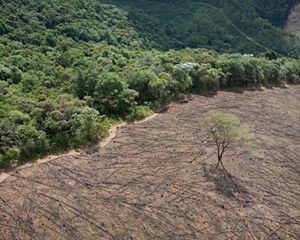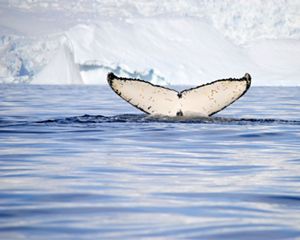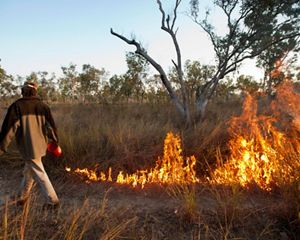Climate Change FAQs
Use this guide to have the best information at hand about the urgent challenge of climate change and how we can solve it by working together.
You've got questions. We've got answers.
Climate change isn’t a distant threat—it is happening right now. Every degree of warming we avoid means a more livable planet for us, our children and our grandchildren.
Scientists from The Nature Conservancy are answering some of the most frequently asked questions so that you have the information you need to speak up and take action.
Climate change basics
Is it climate change, global warming, or global climate crisis?
Is climate change caused by humans?
What are the main threats of climate change?
Why is it called "global warming" when parts of the world are getting colder?
Effects of climate change
How is climate change affecting animals?
How is climate change affecting people?
How is climate change affecting the ocean?
Does deforestation contribute to climate change?
Solving climate change
What are solutions to climate change?
What is TNC doing about climate change?
What can I do to stop climate change?
Energy and climate change
How much renewable energy do we need to stop climate change?
Can’t renewable energy hurt the environment?
Why we must urgently act on climate change
How much time do we have to stop climate change?
Is it climate change, global warming, or global climate crisis?
Each of these terms refers to the same thing—the fact that the average temperature of the earth's atmosphere is rising. As the temperature rises, various impacts are changing aspects of our climate—hotter summers, rising ocean temperatures, melting polar ice, increased storm activity. These go beyond mere changes in the weather.
As these impacts grow in frequency and severity, they will—and in many cases already have—create crises for people and nature around the world. If unchecked, these impacts will spread and worsen with more species extinctions, water shortages and displaced communities.
Whatever you choose to call it, the most important thing is that we act to stop it.
Is climate change caused by humans?
Yes, over 97% of scientist agree that humans cause climate change. Humanity’s accelerated burning of fossil fuels and deforestation (forests are key parts of the planet’s natural carbon management systems) have led to rapid increases of greenhouse gases in the atmosphere and global warming.
Scientists have known for centuries that gases in Earth’s atmosphere like carbon dioxide and methane act as a greenhouse, preventing a certain amount of heat radiation from escaping back to space. The more greenhouse gases in the atmosphere, the warmer it gets.
Over Earth’s history, carbon dioxide levels fluctuate due to volcanic activity or the carbon cycle (animals and bacteria breathe in oxygen and breathe out carbon dioxide while plants do the opposite).
However, the rises in temperature and carbon dioxide levels we’ve seen in the past century are extreme and are accelerating. The rate of carbon emissions is the highest they’ve been in 66 million years. And the amount of warming in the coming decades is expected to be 250 times greater than the average warming during the past century.
What are the main threats of climate change?
The main threats of climate change, stemming from the rising temperature of Earth’s atmosphere include rising sea levels, ecosystem collapse and more frequent and severe weather.
Rising temperatures from human-caused greenhouse gas emissions affects planet-wide systems in various ways. For example, it warms the polar regions and the oceans, which melts ice cover at the poles and causes sea level rise. Climate change affects ocean habitats by lowering oxygen, decreasing phytoplankton (little plants that serve as the base of marine food chains) and killing coral reefs.
It has contributed to extreme coral bleaching events, like the 2016 event that resulted in a loss of approximately one-third of shallow-water coral cover in the Great Barrier Reef. The worst hit area suffered an 80% loss of shallow-water coral cover.
According to the United Nations’ 2019 IPBES biodiversity report, global warming has become a major driver of wildlife decline by shifting or shrinking the local climates that many mammals, birds, insects, fish and plants evolved to survive in.
The warming of the atmosphere affects weather patterns, causing more frequent and severe storms and droughts across many global regions. Higher temperatures are affecting the length of seasons and in some places, are already crossing safe levels for ecosystems and humans .
All of these impacts, and many, many others will become more severe if we don’t act to stop greenhouse gas emissions.
Why is it called “global warming” when parts of the world are getting colder?
It's easy to confuse current weather events with long-term climate trends. To understand global warming or climate change more generally, it’s important to understand the difference between weather and climate in relation to time. Weather is the conditions of the atmosphere over a short period of time, while climate is weather averaged over long periods of time.
The ups and downs of the daily weather make it hard to see slow changes in climate. To find climate trends you need to look at how weather is changing over a longer time span. Looking at high and low temperature data from recent decades shows that new record highs occur nearly twice as often as new record lows. Weather events that are out of the ordinary show that climate change is almost certainly affecting weather patterns in ways that go beyond mere increases in temperature.
How is climate change affecting animals?
Changing climates directly and indirectly cause stress to animals across the world. Many species are approaching—or have already reached—the limit of where they can go to find hospitable climates.
As temperatures become warmer, native animals that depend on cooler habitats may be particularly vulnerable. One example is the critically endangered Mountain Pygmy-possum, which are only found in alpine and sub-alpine regions of southern Victoria and around Mt Kosciuszko in Kosciuszko National Park in NSW at elevations from 1,300 to 2,230 metres.
In 2016, scientists declared a small mammal, the Bramble Cay Melomys, that lived only on a single island off Australia’s Great Barrier Reef, to be the world's first mammal to become extinct due to climate change. The rodent lived on a small low-lying island only three metres above sea level and five acres in area (the size of two MCGs). They were first spotted by Europeans in 1845 but since then, had lost 97% of their habitat due to sea level rise.
It’s not just how climate change affects an animal directly; it’s about how the warming climate affects the ecosystem and food chain that animal has adapted to.
For example, salmon rely on steady-flowing cold rivers to spawn. As climate change alters the temperature and flow of these waterways, some salmon populations are dwindling. This affects many species that rely on salmon as a food source like orcas or grizzly bears.
In both oceans and on land, the changes in temperature and moisture are causing some species to migrate in search of new places to live.
There are some natural places with enough diversity in altitude and geology such that as the planet warms, they can be resilient strongholds for plant and animal species. These strongholds serve as breeding grounds and seed banks for many plants and animals that otherwise may be unable to find habitat due to climate change. However, strongholds are not an option for all species. Some plants and animals are blocked from reaching strongholds by human development like cities, highways and farmland.
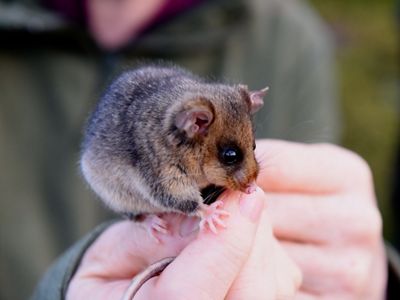
How is climate change affecting people?
From straining agricultural systems to making regions less habitable, climate change is affecting people everywhere. You may have noticed how weather patterns near you are shifting or how more frequently Australia is experiencing heatwaves. Some areas are experiencing more severe flooding or bushfires.
Pacific Islanders are particularly vulnerable. For example, a Solomon Islands provincial capital (Taro) will be relocated to the nearby island of Choiseul due to coastal hazards and the risks of rising sea levels resulting from climate change. At less than two metres above sea level, its location is at significant risk.
Climate change also exacerbates the threat of human-caused conflict resulting from a scarcity of resources like food and water that are less reliable as growing seasons change and seasons become less predictable.
Warmer weather may see an extension of the “mosquito season” each year. It can bring with it risks to humans such as malaria, dengue fever and other mosquito borne disease.
Many of these impacts are happening disproportionately in low-income, Indigenous, or marginalised communities. Around the globe, many of the poorest nations are being impacted first and most severely by climate change, even though they have contributed far less to the increase in carbon emissions that has caused the warming in the first place.
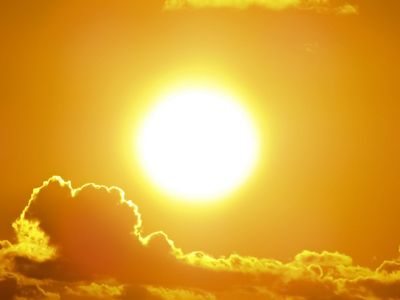
How is climate change affecting the ocean?
Warming ocean temperatures are melting polar ice, shifting ocean currents and fish migrations, and leading to coral bleaching and die off. Because of oceans’ important role in regulating Earth’s climate by absorbing greenhouse gas emissions, they’re taking a direct hit from climate change.
All of this extra absorbed carbon dioxide is altering the chemistry of our oceans, making them more acidic. In fact, the rate of ocean acidification is the highest it has been in 300 million years! This negatively impacts lots of marine habitats and animals. It’s a particular threat to shellfish which are struggling to grow shells as water becomes more acidic.
There are deeper issues at play. As the ocean surface warms, it’s less able to mix with deep, nutrient-rich water which limits the growth of phytoplankton (little plants that serve as the base of the marine food web). This in turn affects the whole food chain.
There is also some evidence that warming surface waters may be contributing to slowing ocean currents. Together, these currents act like a giant global conveyor belt that transports heat from the tropics toward the poles.
This conveyor belt is critical for bringing nutrient rich waters towards the surface near the poles where giant blooms of food web supporting phytoplankton occur (this is why the Arctic and Antarctic are known for having such high abundance of fish and marine mammals).
Does deforestation contribute to climate change?
Yes, deforestation contributes to climate change in a couple ways. Forests are one of our most important types of natural carbon storage. So when forests get cut down, they lose their ability to store the greenhouse gas. Burning trees release even more carbon into the atmosphere.
Forests are some of the best "natural climate solutions" we have on this planet. If we can slow or stop deforestation and manage natural lands so they are healthy, we could achieve up to one third of the emission reductions needed by 2030 to keep global temperatures from rising more than 2°C .
That’s the equivalent of the world putting a complete stop to burning oil.
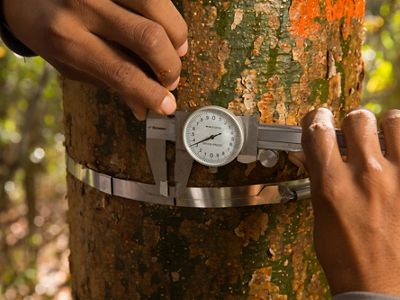
What are solutions to climate change?
In order to avoid the worst impacts of climate change, the Intergovernmental Panel on Climate Change (IPCC) says we must reduce carbon emissions to the point where we hold global warming to no more than an additional 1.5 °C. To do that, we must as a planet commit ourselves to reaching net zero carbon emissions by 2050.
This is no small feat and will require a range of solutions applied together to reach the goal. We'll need to transition all sectors of our economy away from fossil fuels that emit carbon, increase our use of clean energy sources like wind and solar, harness the power of nature to capture carbon, and deploy technologies that capture and store carbon. This transition will happen much faster and more cost-effectively if governments enact an economy-wide price on carbon.
Our research also shows that proper land management of forests and farmlands, also called natural climate solutions, can provide up to one-third of the emissions reductions necessary to reach the Paris Climate Agreement’s goal of aiming to keep temperature rise below 1.5 degrees above pre-industrial levels.
The truth, however, is that even if we do successfully reach net zero carbon emissions by 2050, we will still have to address harmful climate impacts, and so the solution to climate change must also include measures to adapt to the impacts of global warming.
What is TNC doing about climate change?
The Nature Conservancy is committed to tackling climate change, both to limit the worst impacts of climate change, and to help vulnerable people and nature deal with its already-tangible impacts like increasingly extreme weather conditions.
We are doing so by:
- Enhancing nature’s ability to draw down and store carbon across forests, farmlands and wetlands by accelerating the deployment of natural climate solutions.
- Mobilising action for a clean energy future and new, low-carbon technologies.
- Building resilience through natural defenses such as restored reefs, mangroves and wetlands that reduce the impact of storms and floods.
- Restoring and bolstering the resilience of vulnerable ecosystems like coral reefs.
- Helping countries around the globe implement and enhance their commitments to the 2015 Paris Climate Agreement. We are helping to build trust among countries and reducing the narrative that climate action by some nations gives an economic advantage to others.
- Working with Indigenous partners to manage their land and support small cool burns across the vast tropical savanna landscapes of northern Australia. Without frequent controlled burns in the cooler months, dry grass builds up and provides fuel for much bigger bushfires caused by lightning at other times of the year. These hotter, larger fires have a devastating effect on plants and wildlife. They also release huge volumes of greenhouse gases. That’s bad for climate change. Learn more about how we’re fighting fire with fire.

What can I do to stop climate change?
You can be part of the climate change solution. Global warming is an international problem that will only be solved through the actions and policies of all nations working together. But it is also a matter for personal action. The greatest contribution to global warming comes from carbon dioxide released as a waste product when we burn fossil fuels to provide energy to power our homes, industry, and drive our cars.
We can all reduce these emissions by reducing the amount of energy we use and by changing the source of that energy to renewables (like wind and solar) rather than fossil fuels. We can consider purchasing an electric car the next time we trade in our car. We can install solar panels on our roofs to power our homes from the sun rather than coal or gas powered electricity. We can replace incandescent light bulbs with more energy efficient ones like LEDs. Use less hot water by only washing clothes in cold water. These are all choices that depend on individual actions.
The average Australian household emits around 14 tonnes of greenhouse gases every year, half of which is from electricity generation. That’s the equivalent of having three cars on the road for a year. This contributes to climate change.
A simple and relatively cheap way that we can all start to make a difference is by switching our electricity to "green" power. This means using power generated from clean renewable sources such as the sun, wind, hydro and waste power, rather than coal, gas or diesel. It’s available to most households. What you'll pay depends on the percentage of green power and the retailer you have.
Visit greenpower.gov.au for more information.
And tell your local, state and federal government representatives you care about climate change and want to see them enact laws and policies that address greenhouse gas emissions and climate impacts.
One of the simplest—and most important—things that everyone can do is to talk about climate change with family and friends. We know these conversations can seem like a recipe for discord and hard feelings. It starts with meeting people where they are at. We have resources to help you break the climate silence and pave the way for action on global warming.
How much renewable energy do we need to stop climate change?
We need to increase renewable energy at least nine-fold from where it is today to meet the goals of the 2015 Paris Agreement and avoid the worst climate change impacts. Every watt that we can shift from fossil fuel to renewables like wind power or solar power is a step in the right direction.
The best science we have tells us that to avoid the worst impacts of global warming, we must globally achieve net-zero carbon emissions no later than 2050. To do this, the world must immediately identify pathways to reduce carbon emissions from all sectors: transportation, electricity, and industry. This cannot be achieved without a major shift to renewable energy.
Clean energy and technological innovation are not only helping mitigate climate change, but also create jobs and support economic growth in communities across the world. Renewable energy such as wind and solar have experienced remarkable growth and huge cost improvements over the past decade with no signs of slowing down.
Prices are declining rapidly, and renewable energy is becoming increasingly competitive with fossil fuels all around the world. In some places, new renewable energy is already cheaper than continuing to operate old, inefficient and dirty fossil fuel-fired power plants.
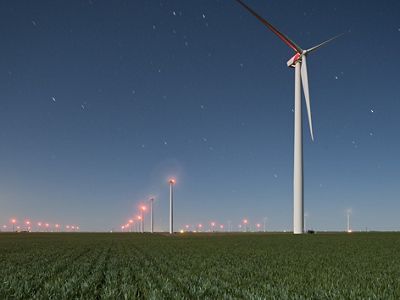
Can't renewable energy hurt the environment?
It’s true that without proactive planning, renewable energy developments could displace up to 30 million hectares of farm and wildlife habitat—an area larger than the size of Victoria. Fortunately, TNC studies have found that we can meet clean energy demand 17 times over without converting more natural habitat.
The key is to deploy new energy infrastructure on the wealth of previously converted areas such as agricultural lands, mine sites and other transformed terrain, at a lower cost.
Thoughtful planning is required at every step. For instance, much of the United States’ wind potential is in the Great Plains, a region with the best remaining grassland habitat on the continent. TNC has mapped out the right places to site wind turbines in this region in order to catalyse renewable energy responsibly.
How much time do we have to stop climate change?
The truth is there is not a hard and fast deadline on climate action vs. inaction. Some studies and articles suggest that unless we make significant progress towards decarbonisation (reducing carbon from the atmosphere and replacing fossil fuels in our economies) by 2030, we may be facing catastrophic climate impacts that would overwhelm our communities and pose an existential threat to certain ecosystems.
Every day that goes by, we are releasing carbon into the atmosphere and increasing our planetary risk. Most scientists agree that we need to begin reducing carbon emissions RIGHT NOW to give our planet and our population the future that is least impacted.
What happens if we do nothing to stop climate change?
If we do not take further action to stop climate impacts we're already experiencing, the planet is likely to see global temperatures rise by 2-4°C by the end of the century.
This type of warming could lead to catastrophic melting of the ice sheets in Greenland and Antarctica, causing sea level rise that would flood most major global coastal cities. In Australia, more than 19 million people live within 50 km of the coast—that’s 85% of our total population.
Habitat will be lost or degrade, and many species will become extinct. Superstorms, drought, and heat waves would become increasingly common and more extreme, leading to major health crises and illness.
Agricultural production would plummet, likely leading to global food shortages and famine. Water supplies would disappear around the world, making some regions nearly inhabitable.
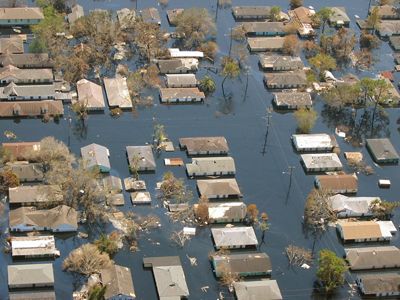
Is it hopeless to stop climate change?
The good news is that climate change is not an impossible problem. We know what causes it and what to do to stop it. It will take courage, ambition and action by governments, business, community and individuals globally.
Reaching net zero carbon emissions by 2050 is an ambitious goal, one that's going to require substantial effort across every sector of the economy. We don't have a lot of time, but if we are prepared to act now, and act together, we can substantially reduce the rate of global warming, and prevent the worst impacts of climate change from coming to pass.
What's most encouraging is that the low carbon economy that we need to create will also give us cleaner air, better energy choices, new jobs and may even save us money. Likewise, many of the natural solutions that we need to adapt to even today’s climate change impacts benefit all of us: cleaner air and water, more natural recreation opportunities and jobs.
It's Time to Act!
The threats to our natural world have never been greater and the need for bold solutions has never been more urgent. Your generous support will put the best conservation science into action right now.
